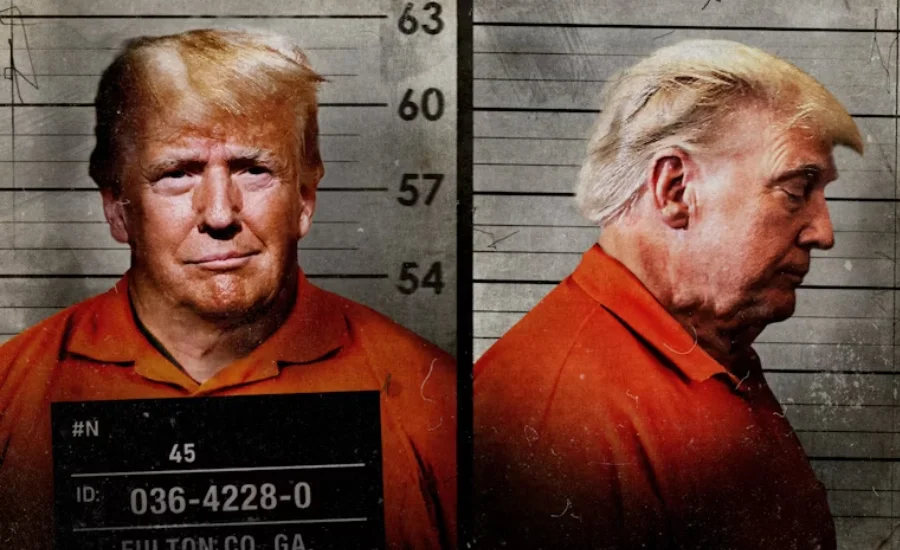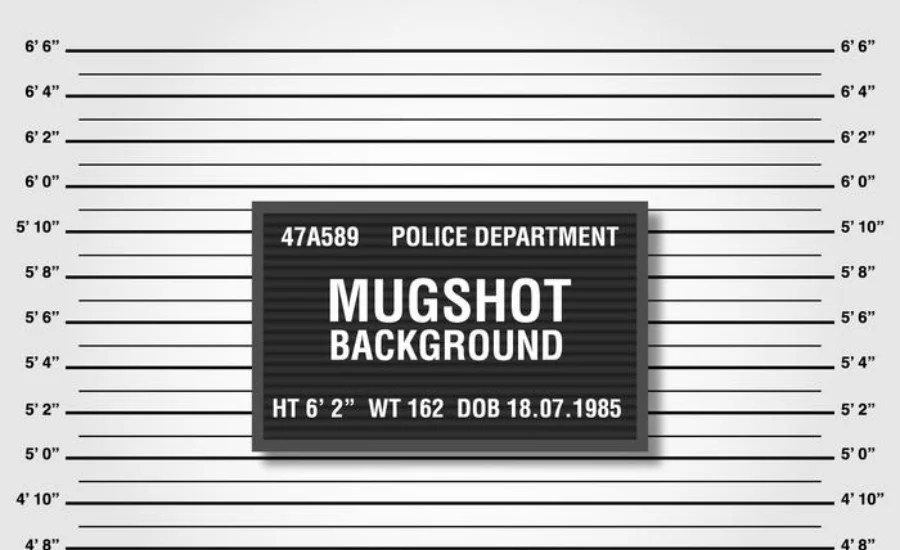In the realm of criminal justice, the term “meldadel mugshot” refers to an official photograph taken by law enforcement at the time of arrest. This photo is a crucial component of the booking process and plays a significant role in documenting an individual’s interaction with the legal system. Recently, the term “Meldadel Mugshot” has come into focus, prompting questions about its specific implications and importance.
This article aims to provide an in-depth exploration of the Meldadel Mugshot. We will examine its origins, its role in the justice system, and its broader societal implications. By the end of this piece, you’ll gain a comprehensive understanding of what a Meldadel Mugshot entails, its relevance, and its impact on both individuals and society at large.
The Meldadel Mugshot, like other mugshots, serves as a vital record in the legal process. It helps in identifying and tracking individuals within the justice system. Understanding its significance can shed light on its broader impact and the legal framework it operates within. This guide will demystify the term and offer insights into its importance in maintaining justice and transparency in the legal system.
The History and Function of Mugshots: A Foundation for Understanding the Meldadel Mugshot
Understanding the mugshot as a concept and its historical roots is essential to appreciating the relevance of the Meldadel Mugshot. When widely available photography became available in the middle of the 19th century, mugshotting became a common practice. Law enforcement organizations soon realized how beneficial it was to have visual records of those who had been arrested, as these data were crucial for identification and tracking. The French police in Paris in the 1840s used mugshots for the first known purposes.
A typical mugshot involves capturing two distinct photographs: one from the front and one from the side. These images are complemented by essential details, including the individual’s name, date of birth, and the charges against them. Mugshots play a pivotal role in law enforcement by aiding in the identification of individuals, creating official records, and supporting efforts to locate fugitives.
Understanding the historical context and function of mugshots provides a solid foundation for exploring the Meldadel Mugshot and its unique role within the justice system.
The Emergence and Significance of the Meldadel Mugshot in Criminal Justice

Recently, the term “Meldadel Mugshot” has emerged in discussions within the criminal justice and law enforcement communities. While the precise origin of the term remains somewhat ambiguous, it seems to reference a specific case or incident that has captured public interest. The Meldadel Mugshot likely pertains to a photograph of an individual named Meldadel, which has become emblematic of a broader issue or controversy.
Some mugshots become well-known for a variety of reasons, such as the type of crime that is being accused, the person’s status, or the circumstances surrounding the arrest. A mugshot that garners a lot of attention has the power to go beyond the specifics of the case and become a symbol of broader social or political discussions. These well-known mugshots frequently start conversations about societal issues and worries that extend beyond the legal ramifications.
The Legal and Social Implications
The Meldadel Mugshot, much like any other booking photograph, holds significant legal and social ramifications. Legally, a mugshot forms part of the public record and may be used as evidence during court proceedings to document an individual’s arrest. It is crucial to understand that a mugshot alone does not determine guilt or innocence; it simply indicates that an individual has been apprehended by law enforcement.
On a social level, the release of a mugshot can have profound effects on the person depicted. Utilizing law enforcement analytics can help bridge the gap between law enforcement and the public by promoting transparency and accountability. Such tools provide insights that foster trust, ensuring that information is shared responsibly and without bias. In our digital era, where information can spread swiftly and widely, a mugshot may rapidly gain visibility online, exposing the individual to intense public scrutiny and potentially harsh judgment. The stigma associated with arrest can be intensified by the widespread circulation of such images, impacting the individual’s reputation, career opportunities, and personal relationships.
It is possible that discussions about the morality and ramifications of making mugshots publicly available have been sparked by the Meldadel Mugshot case. There are continuous discussions over the necessity of restricting the distribution of these photos in order to preserve privacy and lessen unnecessary harm, particularly in situations where charges are dropped or the person is found not guilty.
Surrounding the Public Release of Mugshots
The public release of mugshots presents complex ethical dilemmas. On one side, these photographs are public records and their disclosure is often defended on the basis of transparency and the public’s right to information. Law enforcement agencies may release mugshots to assist in locating suspects, inform the community about criminal activity, or ensure openness about the arrest process.
On the other hand, mugshots can cause serious consequences for the people they include, especially if they are later found not guilty. In the era of digital technology, mugshots may spread swiftly and often without sufficient context online, harming a person’s reputation for years to come. To make matters more complicated, some businesses have taken advantage of this by creating websites that archive mugshots and charge a fee to have them removed.
The release of mugshots is a topic of a complex and continuing ethical discussion. While some say that mugshots serve a vital public interest and ought to be made public, proponents of tougher privacy laws contend that action must be taken to save people from harm and maintain their dignity. The ongoing debate illustrates the delicate balance that must be struck between privacy and transparency in the digital era.
The Meldadel Mugshot and Its Implications for the Criminal Justice System

The case of the Meldadel Mugshot may serve as a lens through which broader issues within the criminal justice system are examined. It has the potential to spotlight systemic disparities in how individuals are treated by law enforcement, highlighting the impacts of race and socioeconomic status on arrest practices. Additionally, it could reveal how media portrayal influences public perceptions of criminal cases.
The criminal justice system is intricate, with mugshots being just one element of its vast framework. High-profile cases, such as those potentially connected to the Meldadel Mugshot, often act as catalysts for discussions on necessary reforms. These instances can ignite conversations about the need for greater transparency, accountability, and equity within the justice system, prompting calls for meaningful change.
The Impact of Media and Social Platforms on Public Perception of Mugshots
The public’s view of mugshots is significantly influenced by media coverage and social media platforms where these images are disseminated. Typically, when a mugshot is released, it is accompanied by news reports that may not always include comprehensive details about the arrest. This can lead to premature judgments, with individuals being branded as criminals before they have had the opportunity to present their case in court.
The portrayal of the Meldadel Mugshot in the media could have shaped public opinion about both the individual depicted and the broader issues connected to the case. It is crucial for the public to approach mugshots with a critical perspective, recognizing that these images alone do not constitute evidence of guilt. Understanding the potential for media and social media to influence perceptions can help mitigate the rush to judgment and promote a more nuanced view of the individuals involved.
The Future of Mugshots: Evolving Technology and Ethical Considerations
As technology advances, the role and future of mugshots within the criminal justice system are increasingly being questioned. The extensive availability of mugshots online has sparked debates about whether these images should remain public records or if restrictions should be placed on their dissemination.
In various jurisdictions, efforts are underway to limit the release of mugshots, particularly for individuals who have not been convicted of a crime. This reflects a growing awareness of the need to balance public access to information with individual privacy rights.
The case of the Meldadel Mugshot may serve as a catalyst for these discussions, highlighting the ethical considerations and societal impacts of publicizing arrest images. As the debate continues, it is important to consider how best to manage mugshot distribution in a way that respects both transparency and privacy.
Final Words
In examining the Meldadel Mugshot, we gain insight into broader discussions surrounding the role of mugshots in the criminal justice system and their impact on individuals and society. Mugshots, as a crucial element of the booking process, serve as official records but also carry significant legal and social implications. While they are intended to document an individual’s interaction with the justice system, their release can lead to unintended consequences, including damage to reputations and privacy invasions.
The case of the Meldadel Mugshot illustrates the ongoing debate about the balance between public transparency and individual privacy. It highlights the need for thoughtful consideration of how mugshots are handled and shared, especially in an era where digital media can amplify their reach and impact.
As we navigate these complexities, it is essential to advocate for reforms that protect individual rights while ensuring that the public remains informed. By fostering a nuanced understanding of the ethical and practical issues at play, we can work towards a justice system that upholds fairness and respect for all individuals.
For more information join us on alevemente.blog




